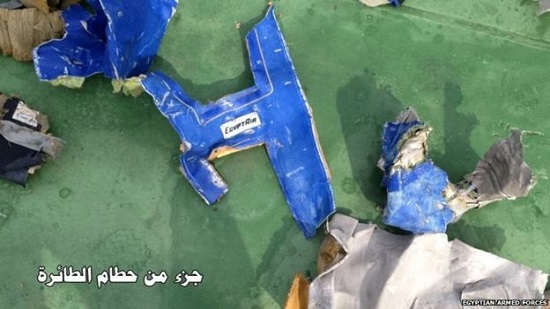The Egypt Air disaster may have dropped out of the news briefly, but the investigation continues apace to find out why flight MS804 crashed.
French investigators think they have heard locator-beacon signals from at least one of the "black box" flight recorders, and now salvage experts are heading to the site to take a closer look.
Hearing the beacons is one thing, but they won't know for sure what they have found until they send down a robotic submarine armed with bright lights and cameras.
"Black boxes" are, in fact, bright orange and have reflective strips, so they show up pretty well when you shine lights on them.
The robotic submarine is on a special salvage ship, called the John Lethbridge.
The sub has claws (manipulator arms) that can pick things up and bring them to the surface.
I have spoken to a marine salvage expert, David Mearns, who has decades of experience looking for shipwrecks and lost aircraft.
It had a different name then, but he used the John Lethbridge in 2001 to photograph the wrecks of the warships Bismarck and HMS Hood.
This is also a man who once ran an operation to pick up every single piece of a crashed aircraft that had sunk 3,800m (12,500ft) to the sea bed on the other side of the Mediterranean Sea (actually the Tyrrhenian Sea off western Italy).
It took his team two years to recover all the debris.
Mr Mearns is not involved in this search, but he knows crew members on the John Lethbridge, and ocean recovery is a small, specialised world.
His best guess, and it's just that because he doesn't know all the details, is that, with a fair wind, the team with the robot sub could be on site within three or four days.
They have to stock up in port first.
"If they're really lucky, they could find the black boxes on their first dive," he told me, "but it all depends."
"It is not unusual for the underwater locater beacons, or pingers, to have been knocked off the black boxes during the crash."
In the meantime, Mr Mearns thinks that the ship, Lalplace, that initially heard the pingers, will have remained on site to sweep back and forth, listening out for more locator-beacon signals.
They go in set patterns, figure of eights or clover leaves, "to get the best possible range and bearings from which they can calculate a more accurate position of the black boxes on the seabed".
If they have found the plane, he says, investigators are faced with a choice.
Potential crime scene
"This is potentially a crime scene," he said.
"So, they could decide to sonar map and photograph the entire debris field before touching anything.
"That may be an area as small as 1km [0.6 miles] by 1km depending on how the plane broke up.
"Or they may choose to bring the boxes up quickly, because that could give them an early answer."
Recovering aircraft from under the sea is time consuming and complex.
The robot subs, operated by experts on the surface, can bring up small pieces weighing maybe 100kg (15st) in their claws.
You can also strap bigger parts, weighing about 500kg, to the subs.
But the really big pieces, such as the engines or tail for example, require specialist heavy lifting equipment.
There is one piece of positive news.
The depth isn't an issue for this kind of kit.
But all of this is jumping ahead.
First, they have to confirm they have heard a "black box".
Then, they have to find it, recover it, dry the circuits out - that takes a day or two - and download the data.
There are two boxes on board.
The cockpit voice recorder should reveal what the crew thought was happening.
You would hear what they said to each other, plus all the alarms in the background.
The flight data recorder should reveal what the plane's computers thought was happening.
The limited evidence so far points to an on-board fire.
But the "black boxes" might not be able to tell us whether it was started deliberately or not.
They may end up having to recover large parts of the aircraft to know for sure, and that is a long job.
source:bbc




